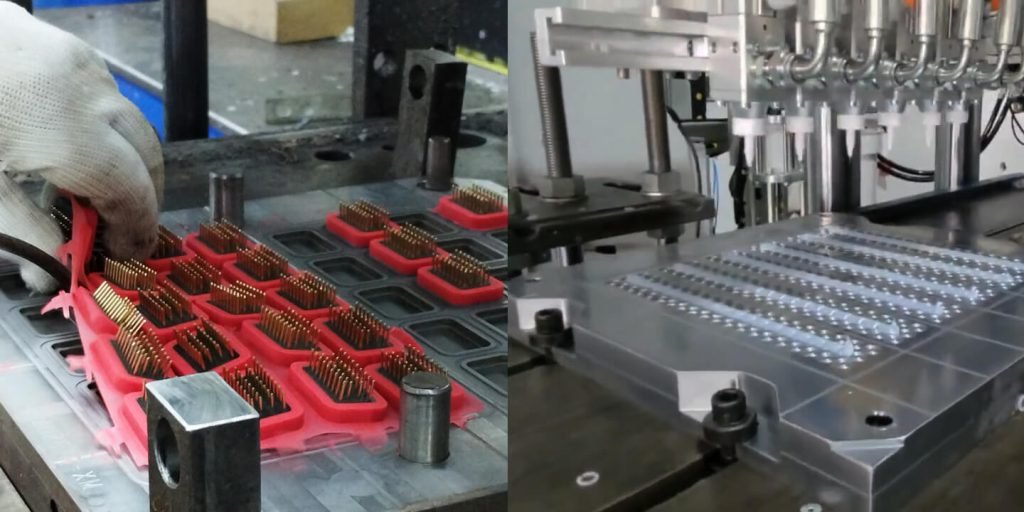what is the silicone overmolding process

Silicone overmolding is a process where a silicone material is molded over another substance, typically a plastic or metal part.
The process offers a variety of design possibilities and can create products that are durable, have improved grip, or are resistant to vibration, impact, and heat.
Here’s a typical silicone overmolding process:
- Prepare the Substrate: First, the part that is to be overmolded (typically made of plastic or metal, also called the substrate) is created. This could be done through processes like injection molding, machining, or other fabrication methods.
- Place the Substrate into the Mold: After the substrate is created, it is placed into a custom-built mold which is designed based on the final product’s requirements.
- Inject the Silicone: Silicone material is then heated and injected into the mold, encapsulating or covering the part. The silicone is often injected under high pressure to ensure it fills even the smallest of gaps.
- Curing: The silicone is then allowed to cure, or harden. This process can take various time lengths depending on the product and type of silicone used, but it generally tends to be a quick process.
- Demolding: Once the silicone has cured, the new product can be removed from the mold.
- Inspection: Finally, a thorough inspection is done to ensure the silicone overmolding part meets the quality standards.
The silicone overmolding process is ideal for a wide range of applications including medical devices, kitchen utensils, electrical insulators, and more due to the range of properties that silicone provides, such as flexibility, heat resistance, chemical resistance, and durability.
